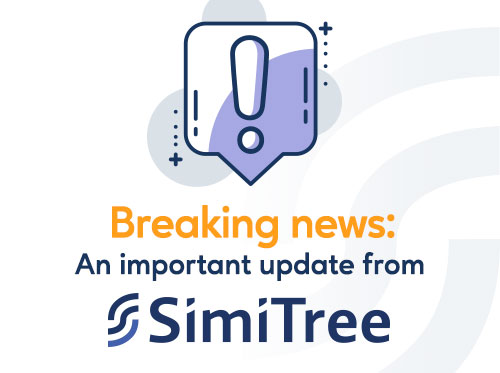Breaking Down the Key Changes in the Proposed FY 2025 Hospice Rule: A Guide for Providers

2025 Hospice Proposed Rule Announced by CMS: Top Takeaways
The Centers for Medicare & Medicaid Services (CMS) recently released its proposed rule for Fiscal Year (FY) 2025 hospice payments. This proposed rule outlines potential changes to hospice payment rates, quality reporting measures, and more. Understanding these changes is crucial for all hospice providers, clinicians, and administrators.
Here’s a breakdown of the key takeaways from the experts at SimiTree that you need to know:
1. Potential Payment Increase and Quality Reporting Requirements
The proposed rule outlines a 2.6% increase in hospice payments for FY 2025. However, hospices that don’t meet quality reporting requirements will see a decrease of 1.4%.
Register for our FREE webinar on Thursday, April 4th to learn how to ensure your hospice meets all quality reporting requirements and maximizes potential reimbursement under the new rule. During this session, our expert-led discussion will delve into the details of the proposed rule and its impact on your hospice. Click here to register now!
2. Annual Payment Aggregate Cap Update
The proposed rule sets the annual aggregate cap for hospice payments in FY 2025 at $34,364.85.
3. Changes to Hospice Quality Reporting Program (HQRP)
The proposed rule introduces two new process measures:
-
- Timely Reassessment of Pain Impact
- Timely Reassessment of Non-Pain Symptom Impact
- These measures will be collected through a new data collection tool called the HOPE instrument.
4. Implementation of the HOPE Instrument
The proposed rule proposes implementing the HOPE instrument to replace the existing Hospice Item Set (HIS) starting in FY 2025.
- HOPE will collect patient data at multiple time points during a hospice stay, including admission, a mid-point HOPE Update Visit (HUV), and discharge. This provides a more comprehensive picture of a patient’s journey compared to HIS.
- HOPE also expands on the data collected compared to HIS. In addition to Sociodemographic information (updated) and Diagnoses (expanded), HOPE will now include:
- Symptom Impact Assessment
- Imminent Death
5. Changes to Statistical Areas
Change to Statistical Areas: CMS proposes to update the labor market delineations based on the 2020 Decennial Census. This may result in changes to the wage index rate for some hospices. The 5% cap on wage index decreases year over year will be applied to these changes.
6. Modifications to the CAHPS Hospice Survey
The proposed rule outlines several changes to the CAHPS Hospice Survey, aimed at improving patient and caregiver experience while collecting valuable feedback. Here’s a closer look:
-
- Addition of a web-mail mode
- Shortened and simplified survey format
- New Care Preferences measure: Two-items
- Revisions to existing measures: The Hospice Team Communication measure and Getting Hospice Care Training measure
- Removal of select items: Three nursing home-specific items and additional survey items impacted by other proposed changes will be removed to ensure the survey remains relevant to the hospice setting
7. Clarifications on Medical Director and Physician Designee Roles
The proposed rule seeks to clarify existing regulations regarding the roles of the medical director and physician designee in hospice certification and admissions. Here’s a breakdown of the proposed changes:
- Admissions to hospice: The rule clarifies that if the medical director is unavailable, the physician designee may review the clinical information and certify terminal illness.
- Hospice Interdisciplinary Group (IDG): The physician member of the IDG is added as an individual who may also review the clinical information for each patient and provide written certification that the patient’s life expectancy is anticipated to be six months or less if the illness runs its normal course.
8. Hospice Special Focus Program (SFP)
The Hospice Special Focus Program (SFP) uses data from four caregiver experience measures collected by the CAHPS Hospice Survey. Here’s what you need to know about the SFP in the proposed rule:
- The SFP algorithm relies on data from these four measures: Help for Pain and Symptoms, Getting Timely Help, Willingness to Recommend this Hospice, and Overall Rating of this Hospice.
- The proposed rule includes changes to the Overall Rating of this Hospice measure, but these changes
9. Request for Information
The proposed rule includes a request for information regarding the potential implementation of a separate payment for high-intensity palliative care services under the hospice benefit, including chemotherapy, radiation, and transfusions.
Stay Informed and Prepared: Complimentary Webinar April 4th
The proposed FY 2025 Hospice Rule has significant implications for hospice providers. Register for our complimentary webinar on Thursday, April 4th to gain a thorough understanding of the proposed changes and their potential impact on your hospice. Our expert speakers, Michael Simione, MBA, and Maureen Kelleher, RN, MBA, will provide valuable insights and answer your questions. Don’t miss this opportunity to stay informed and prepared!
Click here to register for our FREE webinar: Breaking Down the Details: Key Changes in the Proposed Hospice Rule. You’ll learn
- Payment Updates: We’ll provide a clear analysis of potential adjustments to hospice base rates and capitation payments, explaining how these changes could affect your organization’s financial standing.
- Quality Reporting Requirements: Stay ahead of the curve on any proposed modifications to quality metrics and reporting procedures. We’ll explore how these changes might influence your approach to delivering exceptional hospice care.
- Impact on Patient Care: We’ll examine the potential implications of the proposed rule for the day-to-day delivery of hospice services. Gain insights into how these changes might impact your ability to provide comprehensive and compassionate care to your patients. Don’t miss this opportunity to ask questions, address your concerns, and stay informed about critical changes in hospice care.

